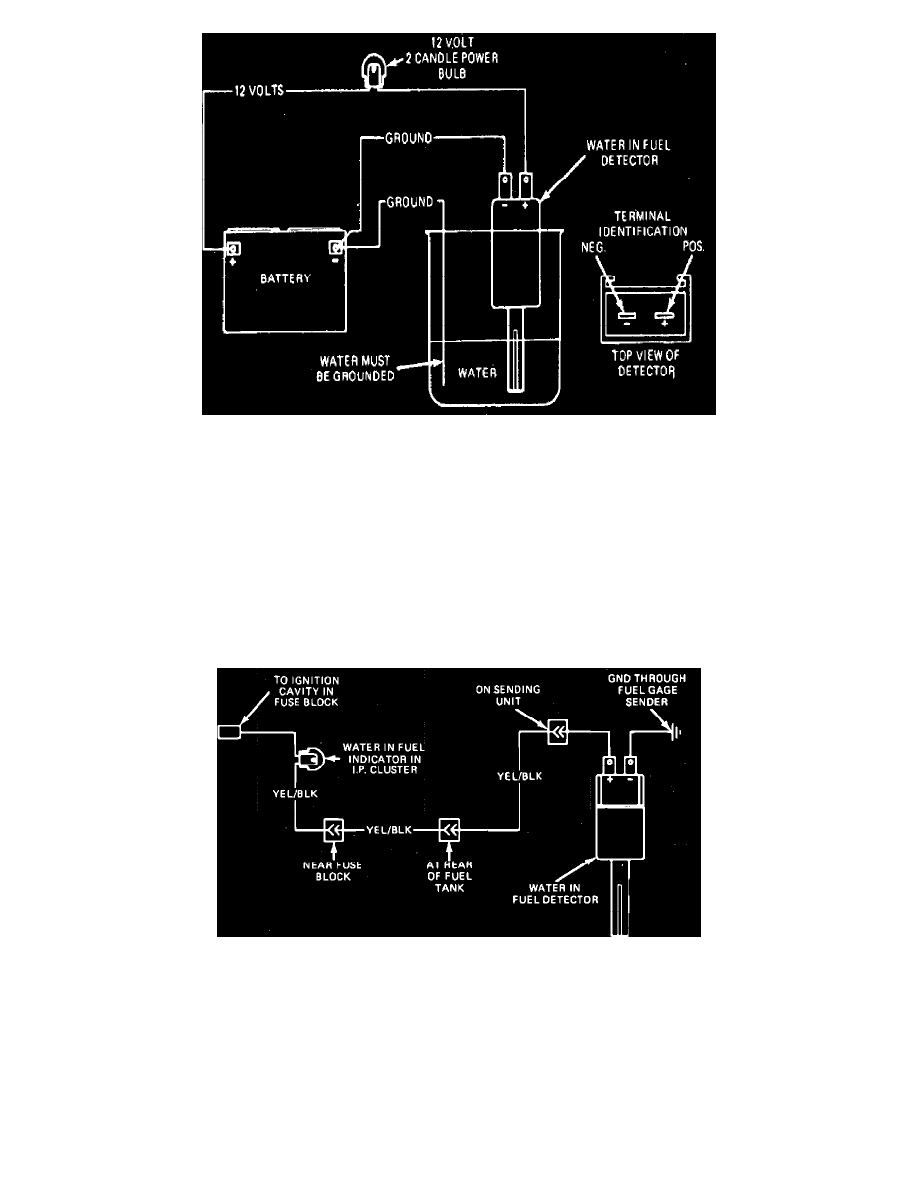Electra V8-350 5.7L DSL (1983)

Fig. 8 Checking water detector operation
WATER IN FUEL LAMP DOES NOT GO ON
If the likelihood of water in the fuel tank exists and the Water In Fuel lamp is off, siphon the fuel tank to check for water by connecting a pump to the
fuel return line. If at least 3 gallons of water are siphoned from the tank, proceed as follows:
1.
Disconnect Water In Fuel electrical lead at fuel tank and ground the lead. If lamp does not go on, proceed to step 4. If it does, check for at least 8
volts at the electrical lead. If no voltage is present, replace the Water In Tank light bulb.
2.
Ground the Water In Tank electrical lead. If lamp does not go on, check for open circuit in wiring, Fig. 6.
3.
Remove fuel level sender and Water in Fuel detector unit from fuel tank.
4.
Check connections to ``Water In Fuel.'' If satisfactory, check detector unit as follows:
a. Remove detector from fuel sender unit, Fig. 7.
b. Connect the detector to a bulb and power source as shown in Fig. 8. The lamp should go on when the detector probe is lowered into the
container of water 3/8 inch or less. Make sure water is grounded to negative side of battery.
Fig. 6 Water In fuel system wiring circuit
WATER IN FUEL LAMP STAYS ON
Under this condition, siphon the tank to check for water by connecting a pump to the fuel return line. If no water is present, proceed as follows:
1.
Disconnect the Water In Fuel electrical lead near the fuel tank. If lamp does not go off, proceed to step 2. If lamp goes off, remove fuel level
sender and check detector as described previously under ``Water In Fuel Lamp Does Not Go On.''
2.
Check for short circuit in wire between the ``Water In Fuel'' connection at the fuel tank and the dash indicator lamp, Fig. 6.
